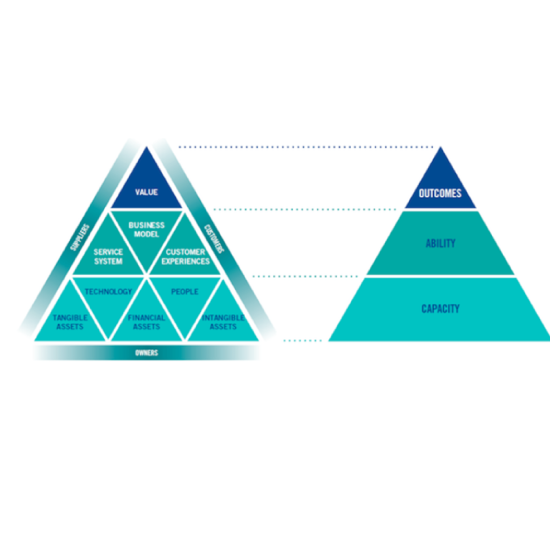ACS is seeking to explain how the costs that affect a local shop business are made up and how they affect the firm's performance.
The future vitality and viability of the UK’s High Streets have attracted considerable attention over many years. However, much of this attention has been based on rhetoric and anecdotal evidence rather than data-driven reality. During a short, 3-month, KEO project, Oxford University researchers and the Local Data Company (LDC) analysed the ways in which the retail mix of over 150,000 shops across 1,300 UK High Streets has changed over a two year period, as well as over the previous thirty - using research previously conducted in Oxford.
Our findings identified the effects of online retailing, the growth in value outlets and the proliferation of consumer service businesses. For the UK’s High Streets to thrive in the future is not just about being big enough to withstand a mixture of economic austerity, online and out-of-town retailing. Whilst many big retail centres continue to be resilient, the most successful smaller town centres are proving to be diverse and versatile, perhaps developing specialist roles. The research team calculated a retail diversity, as well as a service diversity index, for every UK High Street. Our research showed that many of the country’s High Streets continue to evolve to play the changing roles required of them by residents, workers, visitors and their competitive context – although not always into roles that match the expectations of commentators or politicians, perhaps fed by misplaced nostalgia rather than by the realities that some High Streets face.
How are UK High Streets different from each other?
We developed a variety of new metrics as part of a tool kit for stakeholders, in addition to calculating centre profiles by business type and category. For example, a Retail Diversity Index measures the variety of comparison goods outlets present in a place, and thus the more interesting places to shop. A Service Diversity Index recognizes that many High Streets are more than just places for shopping. A leisure services component scored highly centres with particularly strong entertainment and hospitality roles.
How have the UK's High Streets changed?
Over the two year period, the story was as much about a change in the mix as was of massive across the board declines. Several very specific structural changes underlay this.
(a) Digitisation. High Streets had already begun to respond to the most obvious effects of online retailing. In the most vulnerable categories, where the product itself was being digitized there had been a -13% fall in High Street outlet numbers – this equates to over 1,000 stores.
(b) Value. The two year period had seen a +12.4% increase in value-related retailing.
(c) Pawnbrokers, pay-day lenders and betting shops have attracted special attention from politicians. There had been a +17% growth in these outlet numbers over the two year period, since 2011, not just in more traditional metropolitan High Streets but also in smaller market towns.
(d) Food is returning to many High Streets. Independent c-stores in High Streets had grown by +17%, whilst multiple convenience stores, driven by the interest of the major grocery brands, had grown by +8%.
(e) Health & Beauty. This category grew by +10.4%, or by more than 2,300 outlets over the last two years. Indeed, at the end of the reporting period, there were more nail salons on British High Streets than Chinese restaurants.
Over the longer term (30 years) there was longstanding stability amongst the top ten centres, there were clear rises and falls lower in the list. The biggest rises included centres with new development as well as, of course, wholly new entrants. Falls included Croydon, Doncaster and Plymouth, as well as several centres that have exited the top 50 altogether, including Sheffield (63), Swansea (61), Coventry (58) and Middlesborough (56)
What of future prospects for High Streets?
Based on recent historic change, we predicted that the number of comparison goods multiple outlets in our town centres by 2018 could undergo a further fall of some -13% (some 5,000 outlets) over and above the -5% fall since 2011. But such analysis is simplistic - not least it predated the impact of the Covid pandemic. Today the reality is much more complex, given the relative growth and decline of particular categories of business and the uncertainties of the external environment.
Research outputs
- Reynolds, J., & S.M. Wood, (2013), Knowledge management, organisational learning and memory in UK retail network planning, The Service Industries Journal, 33:2, 150-170.
- Reynolds, J., & S.M. Wood, (2012), Leveraging locational insights within retail store development? Assessing the use of location planners’ knowledge in retail marketing, Geoforum, 43(6), November, pp.1076-1087.
- Reynolds, J., & S.M. Wood, (2012), Establishing Territorial Embeddedness within Retail Transnational Corporation (TNC) Expansion: The Contribution of Store Development Departments, Regional Studies.
- Reynolds, J., & S.M. Wood, (2012), ‘Managing communities and managing knowledge: strategic decision making and store network investment within retail multinationals’, Journal of Economic Geography, 2 (2): 539-565.
- Reynolds, J., & S.M. Wood, (2011), ‘The Intra-Firm Context of Retail Expansion Planning’, Environment & Planning (A), 43: 2468-2491.
- Reynolds, J. & S.M. Wood, (2010), ‘Location Decision-Making in Retail Firms: Evolution and Challenge’, International Journal of Retail & Distribution Management, 38 (11/12), pp. 828-845.


